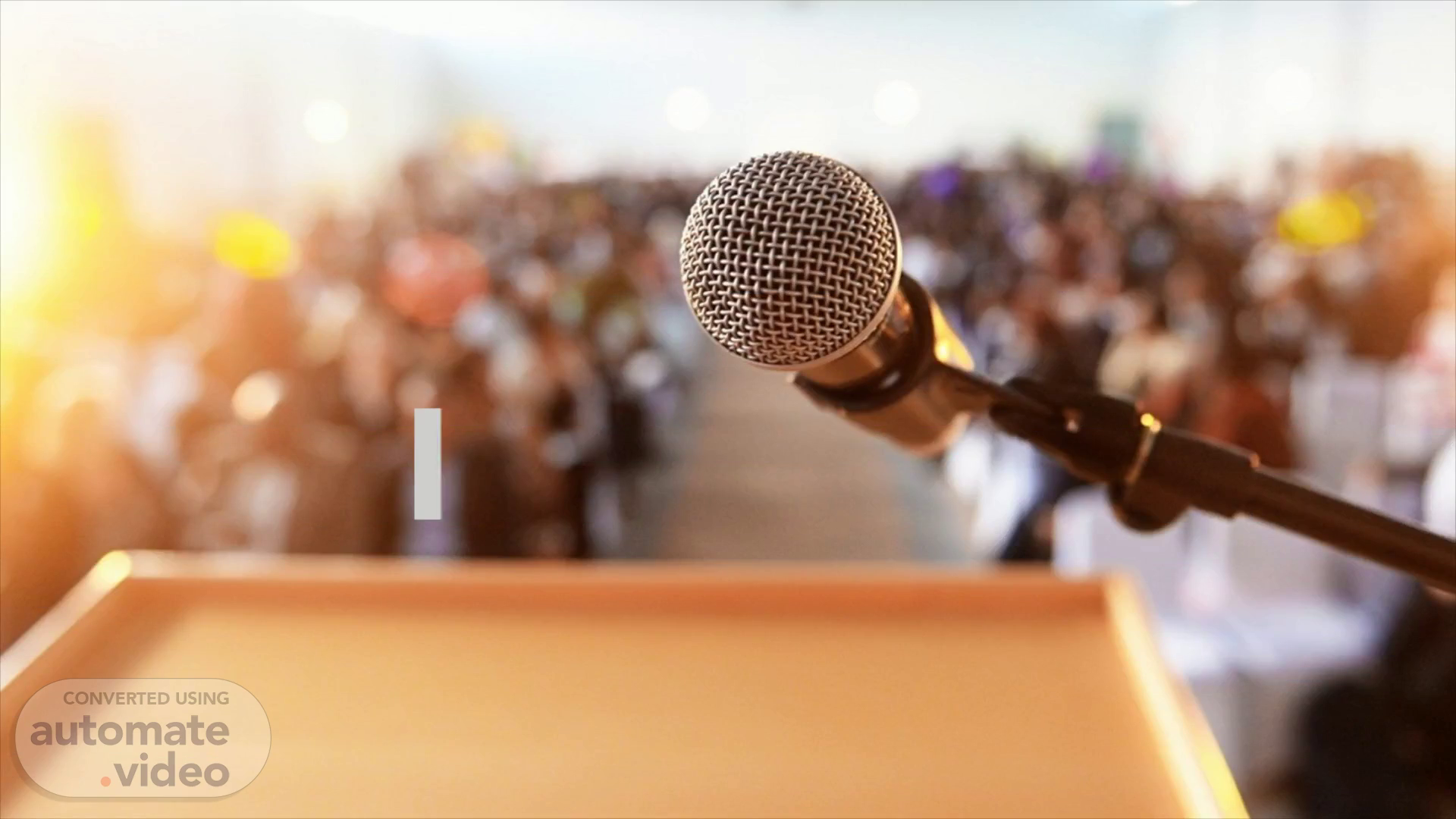Scene 1 (0s)
Public Speaking. Anita Hafila Nugraeni 2001055021.
Scene 2 (13s)
INTRODUCTION TO PUBLIC SPEAKING. The tradition of public speaking Developing the confidence Analyzing the audience Speech communication procces.
Scene 3 (38s)
How to be better public speaking. Public speaking practice and review engage your audience. think positively cope with nervous.
Scene 4 (58s)
The tradition of public speaking. Given the importance of public speaking, it’s not surprising that it has been taught and studied around the globe for thousands of years. Almost all cultures have an equivalent of the English word “orator” to designate someone with special skills in public speaking. The oldest known handbook on effective speech was written on papyrus in Egypt some 4500 years ago. Eloquence was highly prized in ancient India, Africa, and China, as well as among the Aztecs and other pre-European cultures of North and South America..
Scene 5 (1m 45s)
In classical Greece and Rome, public speaking played a central role in education and civic life. It was also studied extensively. Aristotle’s rhetoric, composed during the third century B.C.E., is still considered the most important work on its subject, and many of its principles are followed by speakers (and writers) today. The great Roman leader Cicero used his speeches to defend liberty and wrote several works about oratory in general. Over the centuries, many other notable thinkers have dealt with issues of rhetoric, speech, and language – including the Roman educator Quintilian, the Christian preacher St.Augustine , the medieval writer Christine de Pizan , the British philosopher Francis Bacon, and the American critic Kenneth Burke. In recent years, communication researchers have provided an increasingly scientific basis for understanding the methods and strategies of effective speech..
Scene 6 (3m 1s)
Your immediate objective is to apply those methods and strategies in your classroom speeches. What you learn in your class, however, will be applicable long after you leave university. Keep in mind that the principles of public speaking are derived from a long tradition and have been confirmed by a substantial body of research. The more you know about those principles, the more effective you will be in your own speeches – and the more effective you will be in listening to the speeches of other people..
Scene 7 (3m 46s)
Analyzining the audience. To be an effective speaker, you should know something about the psychology of audiences. Auditory perception is selective. Even when people pay close attention, they don’t process a speaker’s message exactly as the speaker intended. People hear what they want to hear. People also are egocentric. They typically approach speeches with one question uppermost in mind: “Why is this important to me?” Therefore, you need to study your audience and adapt your speech directly to their beliefs and interests..
Scene 8 (4m 39s)
Developing the confidence. Acquire Speaking Experience Prepare, Prepare, Prepare Think Positively Use the Power of Visualization Know That Most Nervousness Is Not Visible Don’t Expect Perfection.
Scene 9 (5m 12s)
Speech communication procces. As you begin your first speeches, you may find it helpful to understand what goes on when one person talks to another. Regardless of the kind of speech communication involved, there are seven elements – speaker, message, channel, listener, feedback, interference, and situation. Here we shall focus on how these elements interact when a public speaker addresses an audience Speaker - Feedback Massage - Interference Chanel - Situation Listener.
Scene 10 (5m 53s)
How to be better public speaking. Tips 1 engage your audience. Hook them from the outset by staring whit an interesting fact a challenging questions ,or an intriguing statement. Encourage your audience to participate by asking a question that’s gets people thinking and that’s hard not to respond to..
Scene 11 (6m 22s)
Tips 2 practice and review Your audience will also more likely warm to you if you talk naturally. Rehearse plenty of times so that you can talk fluently Tips 3 think positively Banish any negative self –talk by using affirmations. And visualize yourself giving a successful speech Tips 4 cope with nervous A natural reaction to the fear public speaking is the flight , flight or freeze response Focus on what your audience is going to gain from your talk , rather than on how you’re feeling and take slow deep breaths before you begin.
Scene 12 (7m 18s)
Don’t do in public speaking. Rambling Bad eye contact cluttered notes complex slides Fidgeting too soft & fillers.
Scene 13 (7m 46s)
what to do in public speaking. organized & concise direct eye contact simplified notes clear, simple slides confident posture & gesture confident, loud voice whit pause.
Scene 14 (8m 11s)
Don’ts and Do’s in public speaking. Don’t Rambling Do organized & concise Bad eye contact cluttered notes complex slides Fidgeting too soft & fillers direct eye contact simplified notes clear, simple slides confident posture & gesture confident, loud voice whit pause.
Scene 15 (8m 30s)
Resource. https://youtu.be/- avMAbJS4hc https://youtu.be/i5mYphUoOCs https:// youtu.be/kn8j-Lhh1Bk О.Н. Public speaking in english.doc SodaPDF -compressed-art-of-public- speaking_reduce (1).pdf.
